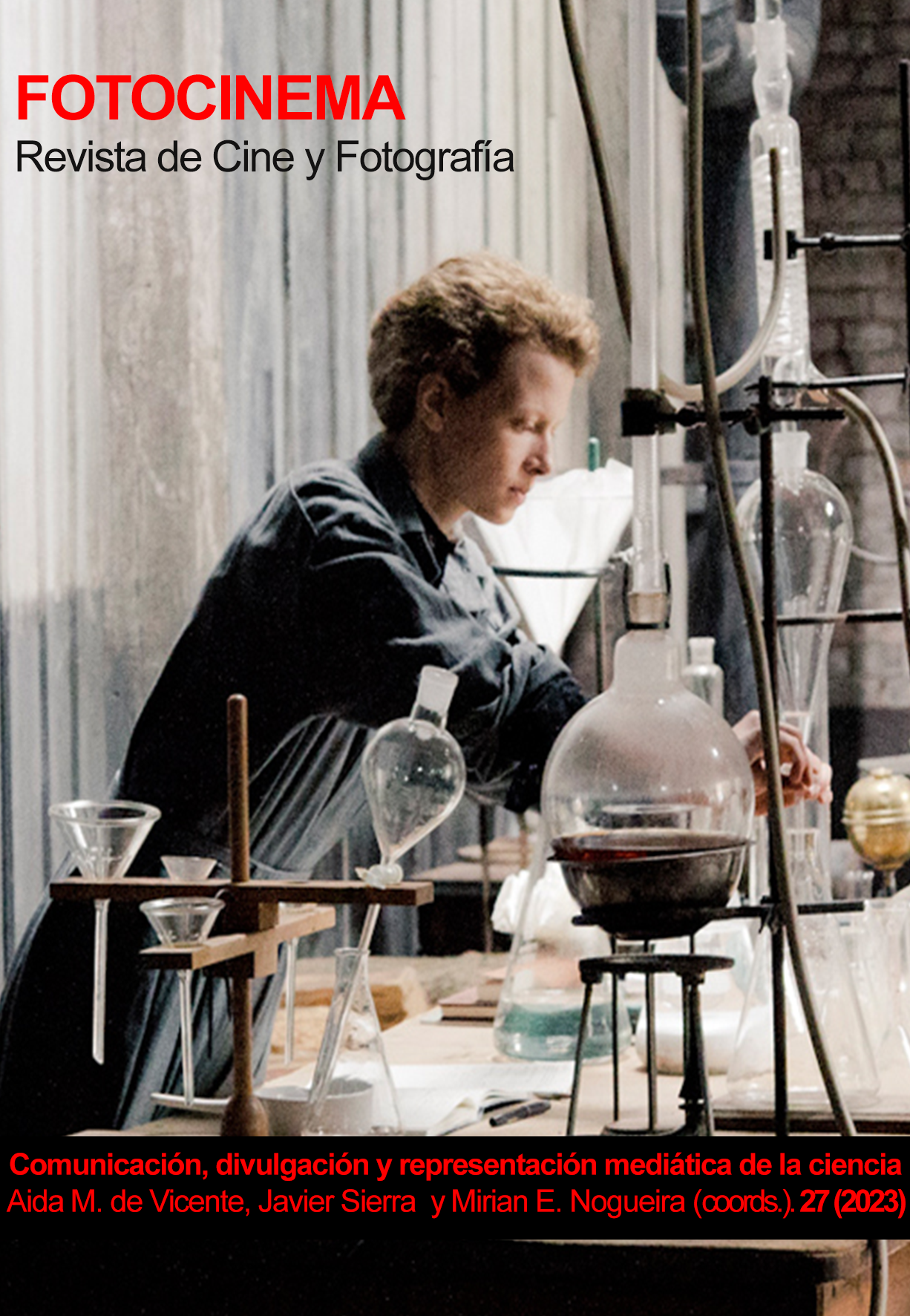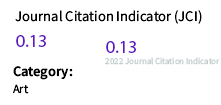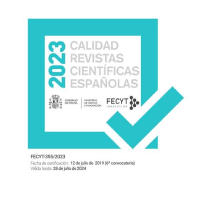Jean Painlevé as the reference to develop a surrealist nature documentarie
DOI:
https://doi.org/10.24310/Fotocinema.2023.vi27.16346Keywords:
Nature documentaries, Jean Painlevé, surrealism, science popularization, cinema history, nature narrativesAbstract
Jean Painlevé (1902-1989) was a nature documentarie director close to cinema movements, such as surrealism or nouvelle vague, and to science, mostly biology. This paper introduces Painlevé and his ouvre in Spanish and proposes that he is the main reference from a surrealist movement within nature documenteries’ History. To achieve this, the study presents an updated Spanish state of the art and a brief biography centered on his relation to cinema movements. Furthermore, using Painlevé’s figure as a cornerstone, it studies different European authors. Research shows how the surrealist aesthetic in nature documentaries is not spontaneous, but an evolution. This aesthetic is called “surrealist nature documentaries” and is addressed through three main techniques: microcinematography, time alterations and use of laboratories for recording.
Downloads
Metrics
References
Alted Vigil, A. (2013). El cine educativo en España (hasta 1936). Historia Social, 76, 91-106. https://www.jstor.org/stable/23496332
Anónimo (1912). Le Scorpion. Francia: Eclair Scientia. https://youtu.be/H6Ux7f9WPtw
Archives Jean Painlevé (2021). Bibliography. https://jeanpainleve.org/exhibitions
Archivo Luce (s.f.). Archivo Luce. https://www.archivioluce.com/
Arnaldo, R. (Director). (1936). La Sezione Scientifica dell'Istituto Nazionale. Giornale Luce. https://patrimonio.archivioluce.com/luce-web/detail/IL5000026998/2/la-sezione-scientifica-istituto-nazionale-luce-3.html
Barnouw, E. (2011). El documental. Historia y estilo. Gedisa.
Bellows, A., Berg, B., y McDougall, M. (2000). Science is Fiction. The films of Jean Painleve. The MIT Press.
Bordwell, D., y Thompson, K. (1995). El arte cinematográfico. Paidós.
Bousé, D. (2000). Wildlife films. University of Pennsylvania Press.
British Film Institute (2010). Secrets of nature: pioneering natural history films [Colección]. BFI.
Buñuel, L. (Director). (1930). L’age d’or. Charles de Noailles.
Cahill, J. (2019). Zoological Surrealism: The Nonhuman Cinema of Jean Painlevé. University of Minnesota Press.
Canales, J. (2011). Desired Machines: Cinema and the World in Its Own Image. Science in Context, 24(3), 329-359.
Chris, C. (2006). Watching wildlife. University of Minnesota Press.
De Ceglia, F. P. (2011). From the laboratory to the factory, by way of the countryside: Fifty years of Italian scientific cinema (1908–1958). Public Understanding of Science, 21(8), 949–967. https://doi.org/10.1177/0963662511412142
Documents Cinematographiques, Les (2009). Science is Fiction, 23 films by Jean Painlevé [Colección]. The Criterion Collection
Franju, G. (Director). (1949). Le sang des bêtes. Paul Legros.
Fretz, L. (2010). Surréalisme Sous-l’Eau: Science and Surrealism in the Early Films and Writings of Jean Painlevé. Film & History, 40(2), 45-65.
Godard, J. (1987). ABCD... JLG. Le Nouvel Observateur, 1206, 12-24. https://n9.cl/rsktw
Gubern, R. (1991). La asimetría vanguardista en España. Cervantes Virtual. https://www.cervantesvirtual.com/obra-visor/la-asimetria-vanguardista-en-espana--0/html/
Hayward, E. (2019). OctoEyes. Frontiers of Communication, 3(50), 1-11. https://doi.org/10.3389/fcomm.2018.00050
Horak, J. C. (2006). Wildlife Documentaries: From Classical Forms to Reality TV. Film History, 18, 459-475. https://doi.org/10.2979/FIL.2006.18.4.459
Hovanec, C. (2019). Another nature speaks to the camera: Natural History and Film Theory. Modernism /modernity, 26, 243–265.
Landecker, H. (2006). Microcinematography and the History of Science and Film. Isis, 97, 121-132. https://doi.org/10.1086/501105
Landecker, H. (2011). Creeping, Drinking, Dying: The Cinematic Portal and the Microscopic World of the Twentieth-Century Cell. Science in Context, 24(3), 381-416. https://doi.org/10.1017/s0269889711000160
Lefebvre, T. (1993). La produzione Scientia (1911-1914) La divulgazione scientifica attraverso le immagini. Griffithiana, 47, 136-202.
Lefebvre, T. (2003). Jean Comandon et les débuts de la microcinématographie. La Revue du Praticien, 53, 1502-1505.
León, B. (2010). La ciencia en imágenes. Construcción visual y documental científico. ArtefaCToS, 3(1), 131-149.
Llinás Rueda, D. (2016). La convergencia tecnológica audiovisual y la divulgación científica. [Tesis Doctoral]. Universidad Complutense de Madrid. https://eprints.ucm.es/id/eprint/38105/1/T37379.pdf
Long, M. (2020). The ciné-biologists: natural history film and the co-production of knowledge in interwar Britain. BJHS, 53(4), 527-551.
López Martín, L. (2020) Redes transnacionales de propaganda a favor de la Republica: Guillermo Fernández Zuñiga y la producción cinematográfica Spain in exile. Historia y comunicación social, 27(1), 243-253. http://dx.doi.org/10.5209/hics.69897
López Silvestre, F., y Rodríguez Alonso, G. (2021). Para una teoría del performanymal. De la representación a la presencia animal en el arte contemporáneo. Anales de Historia del Arte, (31), 431-453. http://dx.doi.org/10.5209/anha.78065
Marañón, G. (1930). Palabras del doctor Marañón en el Cineclub acerca de la vanguardia y el cinematógrafo. La Gaceta Literaria, 83, 1 y 3.
Marey, E. J. (1899). Préface. En E. Trutat, La photographie animée. Gauthiers-Villars.
Martínez Armas, I. (2022). El documental surrealista de naturaleza, estudio de un movimiento dentro del documental de naturaleza. En A. Quintana y J. Pons (Eds.), Mons virtuals en el cinema dels orígens: dispositius, estètiques i públics (pp. 145-155). Museu del Cinema-Col·lecció Tomàs Mallol–Ajuntament de Girona. https://www.girona.cat/shared/admin/docs/1/1/11_mons_virtuals_martinez.pdf
Martínez Armas, I., y Cruz Carvajal, I. (2023). Orígenes del documental surrealista de naturaleza en el cine divulgativo de Jean Painlevé. Documentación de las Ciencias de la Información, 46(1), 5-11. https://dx.doi.org/10.5209/dcin.83759
Martínez Armas, I. (2023b, Marzo, 23). Análisis técnico-narrativo de la obra de Jean Painlevé: el documental surrealista de naturaleza [Comunicación en línea] Congreso Hermes de Comunicación, Lanzarote, España.
Mckenzie, J. S. (2007). The origins of the Institut Marey of the Collège de France and its role in the upsurge of french neurophysiology. The Letter of the Collège de France, 2, 38-41.
Nichols, B. (1997). La representación de la realidad: Cuestiones y conceptos sobre el documental. Paidós.
Nichols, B. (2001). Introduction to documentary. Indiana University Press.
Omegna, R. (Director). (1936). Nei giardini del mare. Istituto Nazionale Luce. https://patrimonio.archivioluce.com/luce-web/detail/IL3000052764/1/giardini-del-mare-1.html
Omegna, R. (Director). (1939). L'axolotl. Il curioso anfibio messicano. Istituto Nazionale Luce. https://patrimonio.archivioluce.com/luce-web/detail/IL3000087993/1/axolotti-1.html
Ortega Gálvez, M. L. (Coord.). (2011). Guillermo López Zúñiga. La vocación por el cine y la ciencia. Universidad Nacional de Educación a Distancia.
Ray, M. (Director). (1928). L’étoile de mer. Man Ray.
Rodríguez Ramos, M. (2018). El Documental Biográfico como Tratamiento Creativo de la Realidad [Tesis doctoral]. The University of Arizona. http://hdl.handle.net/10150/631461
Salcedo de Prado, M. (2008). El documental de divulgación científica sobre la naturaleza: técnicas narrativo-dramáticas y retóricas empleadas por Félix Rodríguez de la Fuente en El Hombre y la Tierra [Tesis doctoral]. Universidad de Navarra. https://n9.cl/2qyus
Stevenson, B. (2021, agosto). Frank Percy Smith, 1880 – 1945. Microscopist. http://www.microscopist.net/SmithFP.html
Suárez, J. (Director). (1971). En la orilla. Audio Visual Productions, Jorge Suárez Cine Documental.
Talbot, F. (1913). Practical cinematography and its applications. W. Heinemann. https://archive.org/details/practicalcinemat00talbrich
Vivanco, L. (2019). Imag(in)ing the Anthropocene: Nature Films and/as Creation Tales. JSRNC, 13(4), 510-530. http://doi.org/10.1558/jsrnc.39468
Downloads
Published
How to Cite
Issue
Section
License
All contents published in Fotocinema Revista científica de cine y fotografía are protected under the Creative Commons Attribution-NonCommercial-ShareAlike 4.0 International (CC BY-NC-SA 4.0) license. All about this license is available in the following link: <http://creativecommons.org/licenses/by-nc-sa/4.0>
Users can copy, use, redistribute, share and exhibit publicly as long as:
- The original source and authorship of the material are cited (Journal, Publisher and URL of the work).
- It is not used for comercial purposes.
- The existence of the license and its especifications are mentioned.
There are two sets of authors’ rights: moral and property rights. Moral rights are perpetual prerogatives, unrenounceable, not-transferable, unalienable, imprescriptible and inembargable. According to authors’ rights legislation, Fotocinema. Revista científica de cine y fotografía recognizes and respects authors moral rights, as well as the ownership of property rights, which will be transferred to University of Malaga in open access. The property rights are referred to the benefits that are gained by the use or the dissemination of works. Fotocinema. Revista científica de cine y fotografía is published in an open access form and it is exclusively licenced by any means for doing or authorising distribution, dissemination, reproduction, , adaptation, translation or arrangement of works.
Authors are responsable for obtaining the necessary permission to use copyrighted images.










.png)

13.png)




